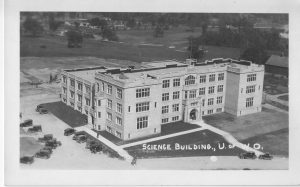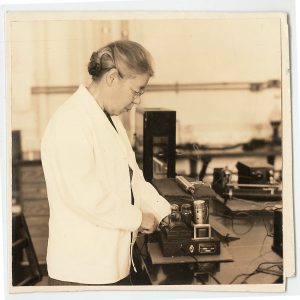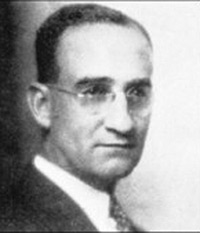Radar Research in London, ON
Research at the University of Western Ontario
The University of Western Ontario is considered a research institution, and many of its professors have contributed to advancement in their respective fields. During World War II, the Science Department expanded at the University of Western Ontario, and began focusing on physics and its application to radar technology. The University was able to make this change due to research conducted by Dr. Robert William Boyle and Dr. Elizabeth Laird.
Dr. Boyle was a renowned physicist and researcher. He obtained a degree in electrical engineering from McGill University, and later studied in Manchester, United Kingdom. Prior to World War I, Boyle was teaching at the University of Alberta, and continued to teach there throughout the war. He became involved in research that utilized ultra-sonic waves to detect submarines, and was part of the country’s Anti-Submarine Detection Investigation Committee, also called ASDIC.
ASDIC was a committee of researchers and scientists from Britain, The British Commonwealth, France, and the United States. They developed a system of sonar that would hit an object in the water, bounce back, and from the echo an estimated location could be determined. This system was effective, and was later parlayed into his research on radar. Dr. Boyle was elected to the National Research Council and during World War II and he focused on radar applications for the military.
Due to the importance of radar research at the national level, higher institutions of learning were given funding and the opportunity to conduct radar research. The National Research Council and the London Association for War Research were two primary endowment contributors of the university’s expanding science department.
Working within the university was Dr. Elizabeth Laird, a professor in physics. Dr. Laird had begun her academic career at the London Collegiate Institute before obtaining a bachelor’s degree from the University of Toronto in 1896. She also earned the department’s Gold Medal, but due to her sex was unable to obtain a PhD from the University of Toronto. She was able to get a postdoctoral fellowship from Bryn Mawr College in Pennsylvania, and later studied in Berlin. She received her PhD in Physics from Bryn Mawr College in 1901.
By 1940, Dr. Laird had retired from academia and was no longer working in the sciences. However, with the outbreak of World War II, Dr. Laird came out of retirement to continue her research at the University of Western Ontario.
Dr. Laird worked with Dr. Dearle and his team on intensive radar research and its applications for defense. She was particularly interested in centimeter-length radio waves and how they could be used for accurate detection. Dr. Laird’s contributions to the university’s research earned her the title of Honorary Professor in 1945, and she continued to work with the department until 1953 when she entered her second retirement.
Courtesy of Western Archives




